Abstract
A synthetic compound, 2-[(1,5,10,10a-tetrahydro-3H-thiazolo[3,4b]isoquinolin-3-ylidene) amino]-4-thiazoleacetic acid (S), 44 081 R.P., inhibits the multiplication of rhinoviruses in cell cultures. Of the 69 rhinovirus strains and serotypes that have been studied, 39% were inhibited at a concentration of 7 micrograms/ml, far below that which affects cellular metabolism (250 micrograms/ml). Preliminary data indicate that the compound inhibits some early events of virus replication but that some cellular functions are also involved in its mechanism of action. Despite its antiviral activity in vitro, the compound, when self-administered intranasally as a 0.2% solution to volunteers from the day before to 5 days after inoculation with a human rhinovirus strain, had no significant effect on rhinorrhea, clinical score, or laboratory evidence of infection.
Full text
PDF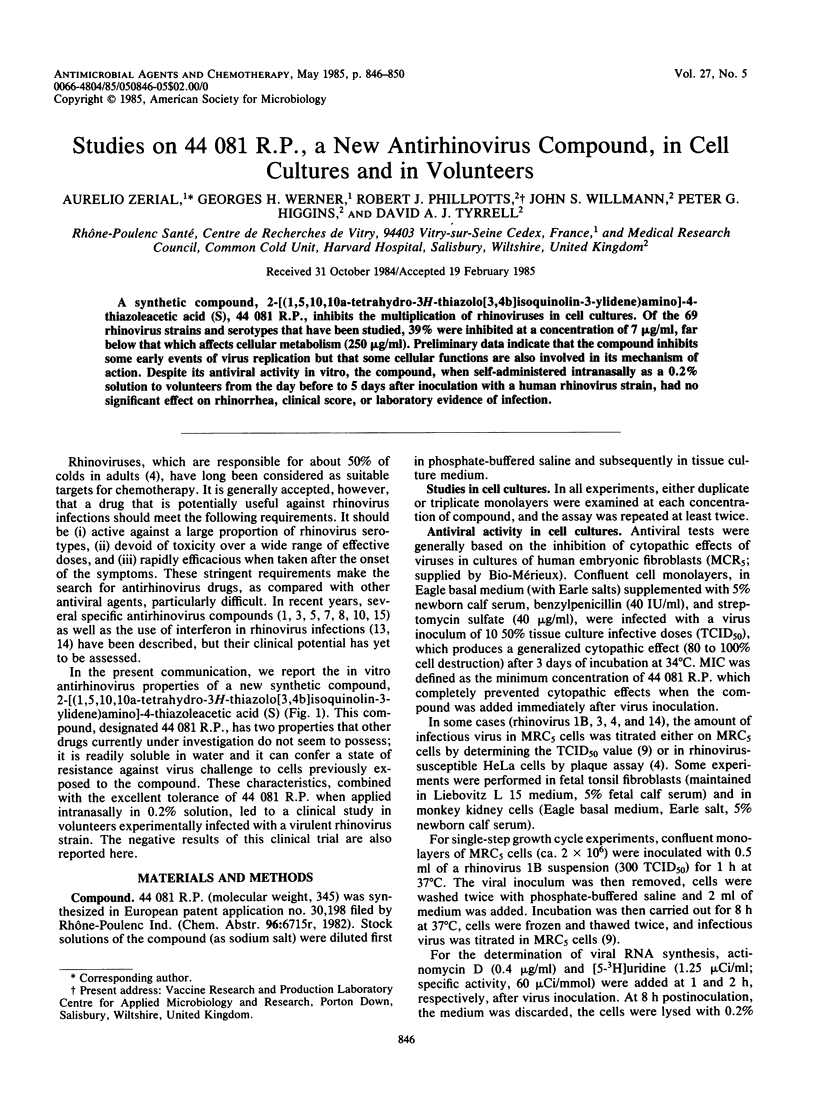
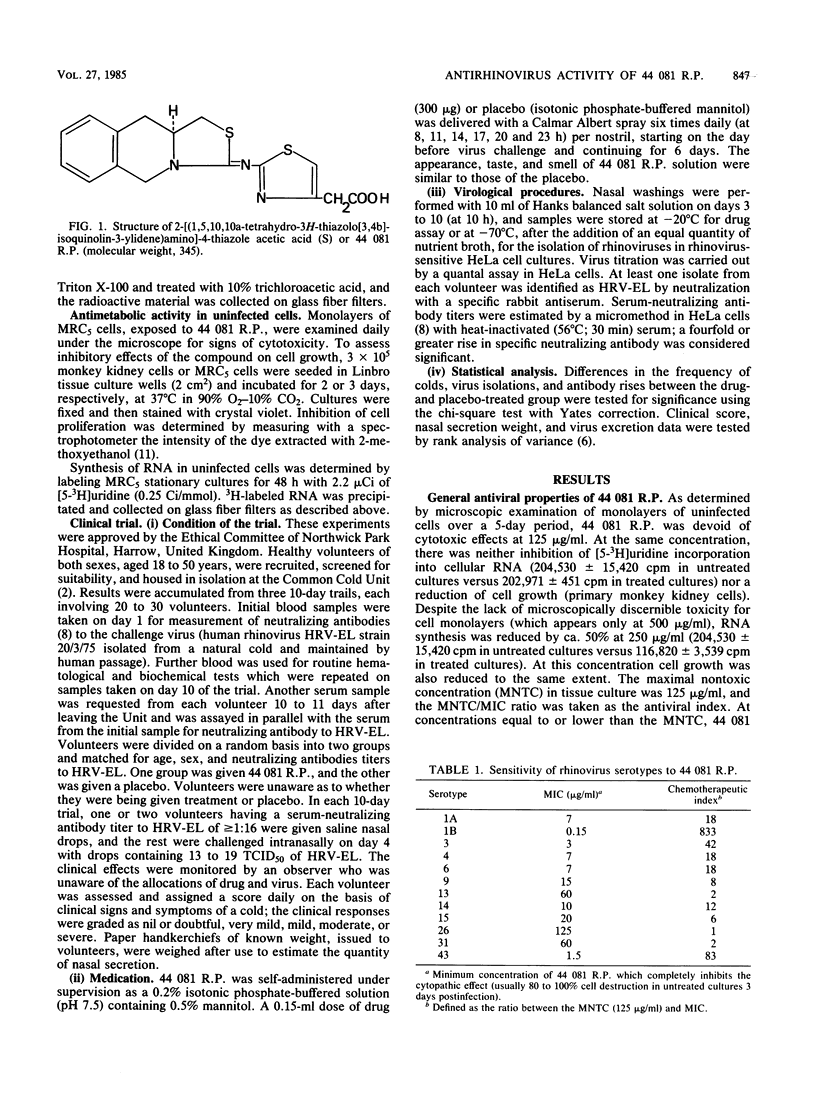
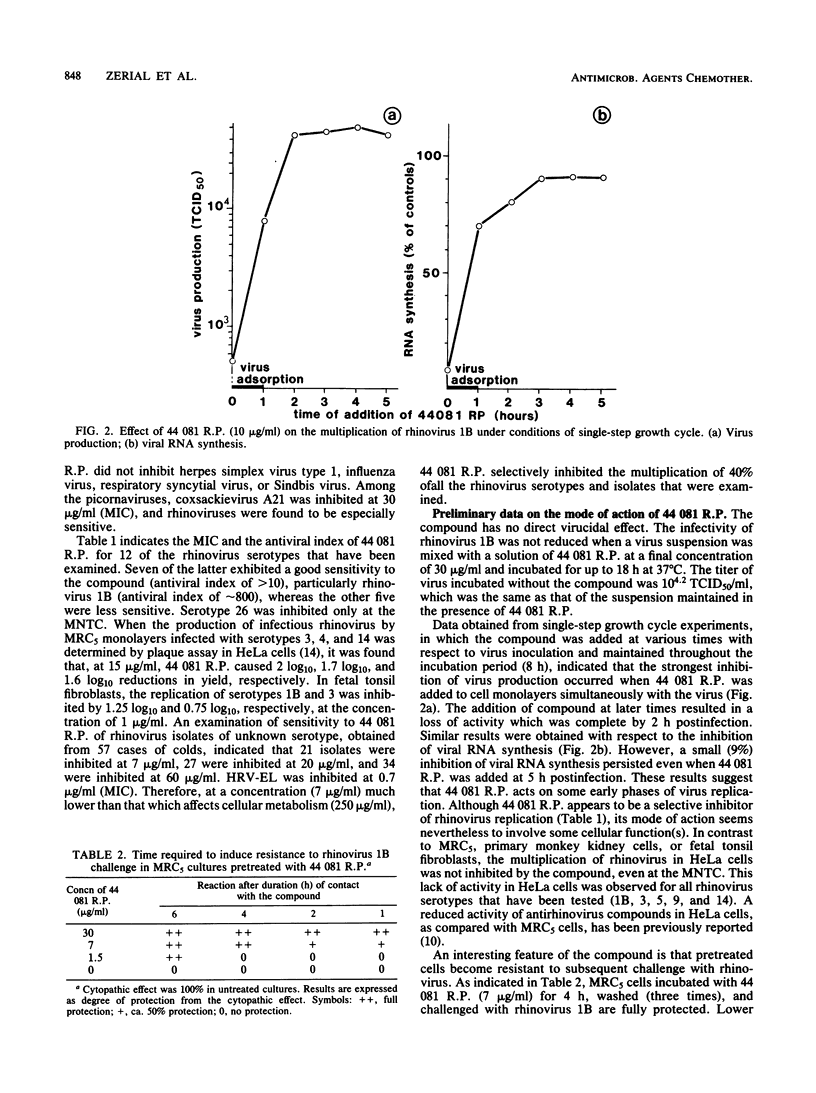
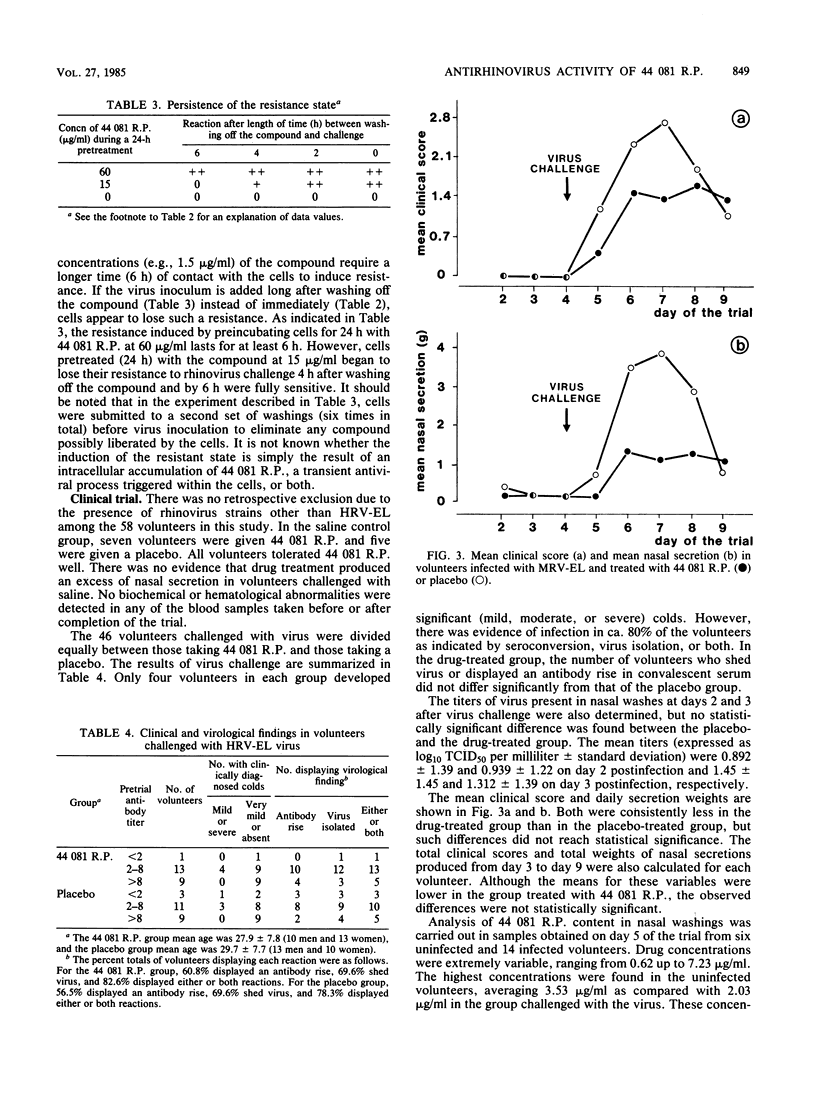
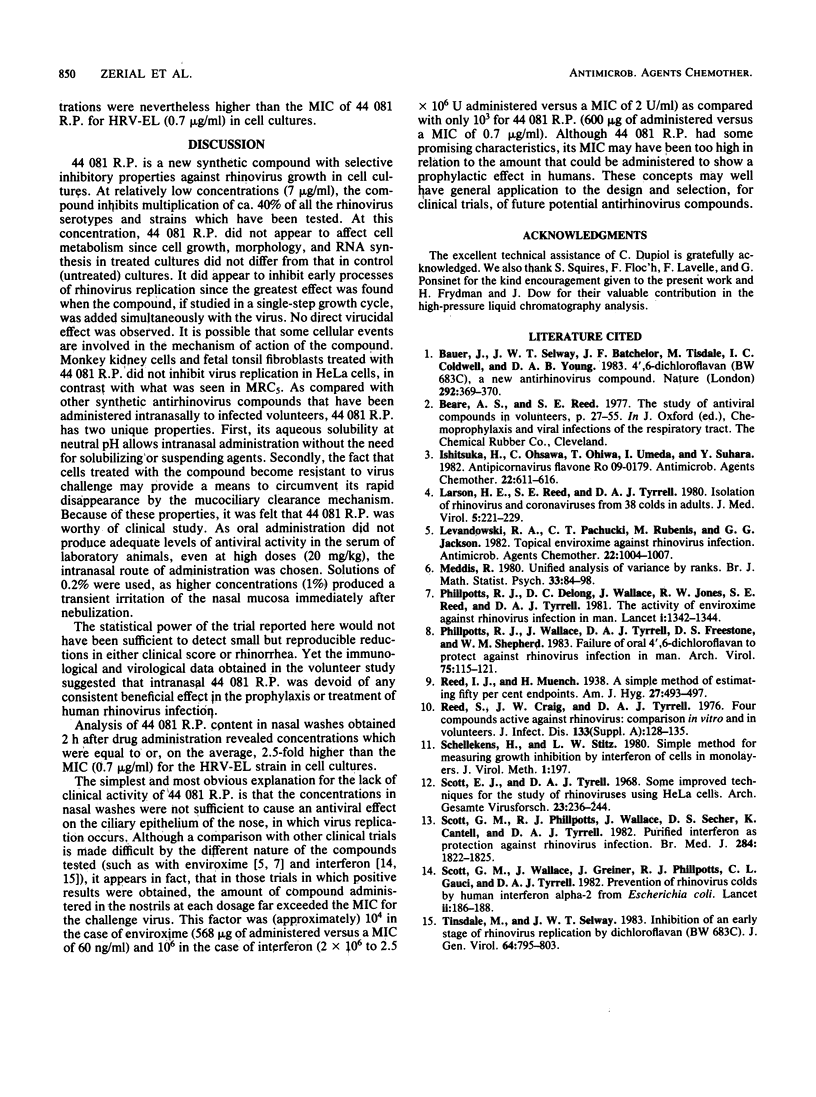
Selected References
These references are in PubMed. This may not be the complete list of references from this article.
- Bauer D. J., Selway J. W., Batchelor J. F., Tisdale M., Caldwell I. C., Young D. A. 4',6-Dichloroflavan (BW683C), a new anti-rhinovirus compound. Nature. 1981 Jul 23;292(5821):369–370. doi: 10.1038/292369a0. [DOI] [PMC free article] [PubMed] [Google Scholar]
- Ishitsuka H., Ohsawa C., Ohiwa T., Umeda I., Suhara Y. Antipicornavirus flavone Ro 09-0179. Antimicrob Agents Chemother. 1982 Oct;22(4):611–616. doi: 10.1128/aac.22.4.611. [DOI] [PMC free article] [PubMed] [Google Scholar]
- Larson H. E., Reed S. E., Tyrrell D. A. Isolation of rhinoviruses and coronaviruses from 38 colds in adults. J Med Virol. 1980;5(3):221–229. doi: 10.1002/jmv.1890050306. [DOI] [PMC free article] [PubMed] [Google Scholar]
- Levandowski R. A., Pachucki C. T., Rubenis M., Jackson G. G. Topical enviroxime against rhinovirus infection. Antimicrob Agents Chemother. 1982 Dec;22(6):1004–1007. doi: 10.1128/aac.22.6.1004. [DOI] [PMC free article] [PubMed] [Google Scholar]
- Phillpotts R. J., Jones R. W., Delong D. C., Reed S. E., Wallace J., Tyrrell D. A. The activity of enviroxime against rhinovirus infection in man. Lancet. 1981 Jun 20;1(8234):1342–1344. doi: 10.1016/s0140-6736(81)92520-4. [DOI] [PubMed] [Google Scholar]
- Phillpotts R. J., Wallace J., Tyrrell D. A., Freestone D. S., Shepherd W. M. Failure of oral 4',6-dichloroflavan to protect against rhinovirus infection in man. Arch Virol. 1983;75(1-2):115–121. doi: 10.1007/BF01314131. [DOI] [PMC free article] [PubMed] [Google Scholar]
- Schellekens H., Stitz L. W. Simple method for measuring growth inhibition by interferon of cells in monolayer. J Virol Methods. 1980;1(4):197–200. doi: 10.1016/0166-0934(80)90058-0. [DOI] [PubMed] [Google Scholar]
- Scott G. M., Phillpotts R. J., Wallace J., Gauci C. L., Greiner J., Tyrrell D. A. Prevention of rhinovirus colds by human interferon alpha-2 from Escherichia coli. Lancet. 1982 Jul 24;2(8291):186–188. doi: 10.1016/s0140-6736(82)91031-5. [DOI] [PubMed] [Google Scholar]
- Scott G. M., Phillpotts R. J., Wallace J., Secher D. S., Cantell K., Tyrrell D. A. Purified interferon as protection against rhinovirus infection. Br Med J (Clin Res Ed) 1982 Jun 19;284(6332):1822–1825. doi: 10.1136/bmj.284.6332.1822. [DOI] [PMC free article] [PubMed] [Google Scholar]
- Stott E. J., Tyrrell D. A. Some improved techniques for the study of rhinoviruses using HeLa cells. Arch Gesamte Virusforsch. 1968;23(3):236–244. doi: 10.1007/BF01241896. [DOI] [PubMed] [Google Scholar]
- Tisdale M., Selway J. W. Inhibition of an early stage of rhinovirus replication by dichloroflavan (BW683C). J Gen Virol. 1983 Apr;64(Pt 4):795–803. doi: 10.1099/0022-1317-64-4-795. [DOI] [PubMed] [Google Scholar]


